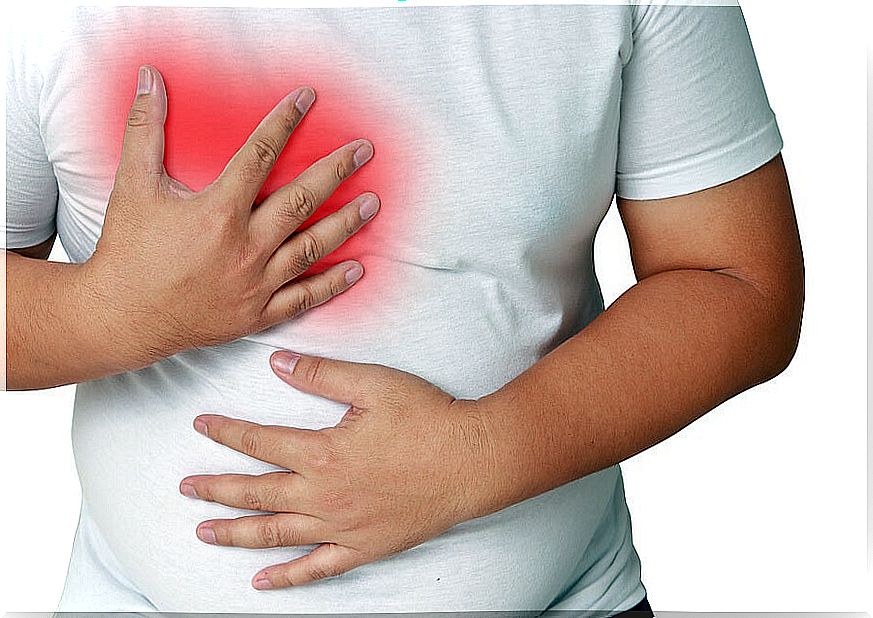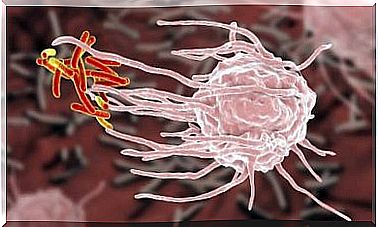Pulmonary Embolism: Symptoms And Treatment
Pulmonary embolism is a consequence of other health problems. For several years, the mortality rate from this disease has been decreasing. It is very important that it is detected and treated early to ensure survival.

Pulmonary embolism is a serious and relatively common problem. It is estimated that one in every 1000 inhabitants suffers from it a year. However, specialists believe that its incidence may be higher, since not all cases are treated medically.
It is called pulmonary embolism when a mass, usually a clot, obstructs the blood flow to the lungs. Although the most common is that it is produced by a blood clot, it can also originate in a fat thrombus and, even, by a sudden entry of air.
Pulmonary embolism is life threatening. Currently, it is estimated that between 8 and 10% of those affected die. What determines the severity of each case is the size of the blocked artery, as well as the amount of lung tissue affected.
What is pulmonary embolism?

Simply put, pulmonary embolism is a sudden obstruction of a pulmonary artery. This usually occurs when parts of a thrombus break off in a vein, then migrate and fixate in an artery in the lungs.
According to their level of severity, pulmonary embolisms are classified into two large groups :
- High risk : occurs when there is hypotension or shock. It generates an early mortality of at least 15%.
- Normal voltage : in this case, the voltage level remains normal. It includes two subgroups:
- Low risk, generally requiring only outpatient treatment.
- With a higher risk of complications, which does require hospital management and early treatment.
Causes
Most cases of pulmonary embolism are secondary to triggering risk factors. This means that they are the consequence of another health problem. The main risk factors are the following:
- Lower limb injuries.
- Spinal damage
- Severe trauma .
- Major surgery.
The cancer is another factor that can trigger a pulmonary embolism. Lung and pancreatic cancer, as well as that of the central nervous system, are the ones most likely to generate thrombotic complications. The same happens with gastrointestinal tumors and hematologic neoplasms.
The hereditary factor also seems to exert an influence, although this is not determining. Pulmonary embolisms are more common in women using oral contraceptives . Pregnant women are also at higher risk, especially during the third trimester of gestation and up to six weeks after delivery.
Finally, a higher incidence has been found in those who have undergone in vitro fertilization, as well as in postmenopausal women who are treated with hormone replacement therapy. In the latter case, the risk varies depending on the substance used.
Symptoms

The main symptoms of pulmonary embolism are shortness of breath and chest pain. The feeling of shortness of breath, or dyspnea, is the most common symptom. It manifests as a difficulty in taking a deep breath and breathing fully and satisfactorily. It appears suddenly.
It is also very common to have chest pain, which is usually sudden, oppressive and intense. It is felt behind the sternum and resembles a heart attack. The pain increases when you cough or breathe in and does not moderate with change in position.
Likewise, the following symptoms are frequent :
- Syncope : loss of consciousness.
- Dry cough or with expectoration.
- Hemoptysis : expulsion of blood through the mouth when coughing. Indicates that there is a pulmonary infarction.
- Tachypnea : increase in the rate of respiration.
- Tachycardia : increased heart rate.
- Others such as paleness, cyanocis or bluish color to the skin, dizziness, fever, sweating, and confusion.
Treatment

Pulmonary embolism is diagnosed by combining clinical suspicion, diagnostic imaging, and the D-dimer blood test. The suspicion is given by the symptoms, with no other explanation. A chest radiograph, electrocardiogram, and arterial blood gas are used to support the diagnosis.
The basic treatment consists of the administration of anticoagulants. It is first carried out parenterally (intravenous, intramuscular or subcutaneous) and then orally.
The prognosis is good if the case is detected and treated early. In 3.8% of cases the embolisms become chronic. For several years, the rate of patients dying during hospital admission due to pulmonary embolism has decreased notably.









